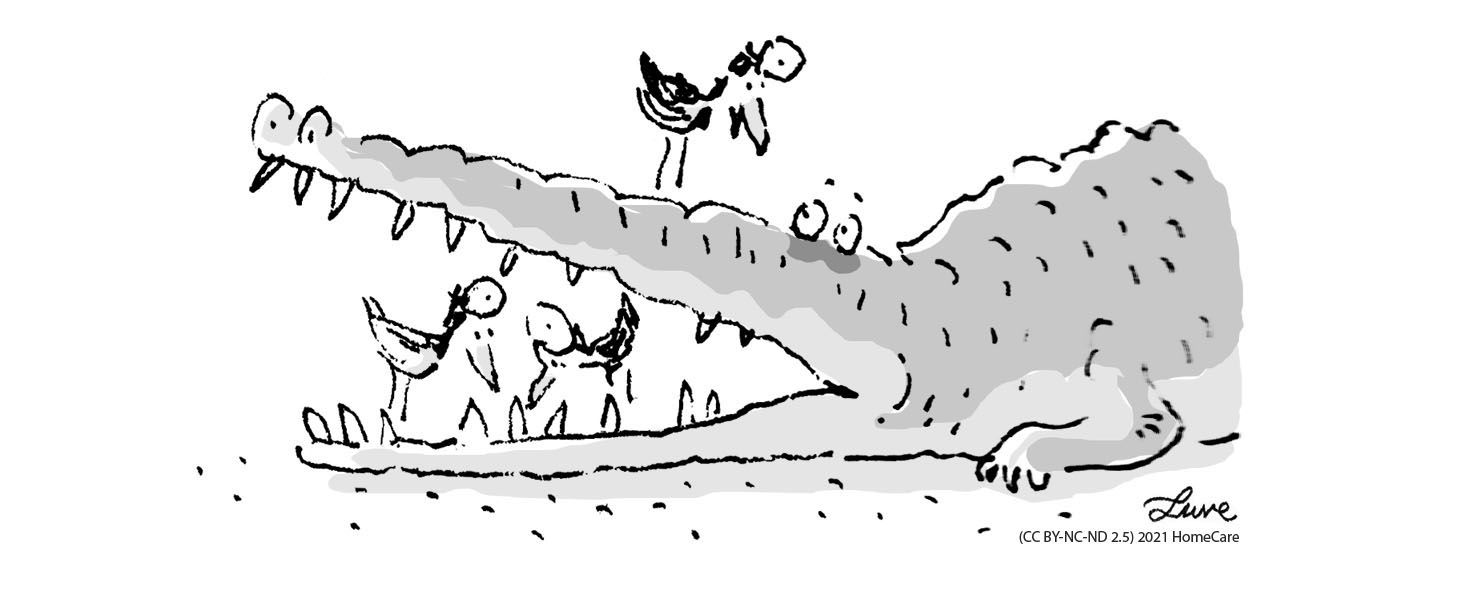
“Don’t spit yet.”
The daily routine in the Oral Hygiene for an elderly person may be slightly different because it may be due to age, frailty or the wearing of dentures.
The elderly’s teeth need brushing twice a day as normal. Followed by a mouthwash gargle and flossing if appropriate. Dentures need soaking in an appropriate solution followed by brushing. The soft toothbrushes are recommended for elderly.
If you have noticed certain signs that have concerned you like cavities, broken teeth, loose teeth and abnormal gums etc., begin by asking the elderly person if they have any pain or discomfort in their mouth. Then, ask if they are experiencing any pain or discomfort eating their food. Perhaps they’re finding chewing or swallowing a challenge. This would be sure signs that a check up with dentist is necessary.
In the case of an elderly person who moves independently, our help in the tooth brushing treatment may be limited to assisting in this activity or reminding the person to perform it. The situation is different in the case of an elderly person lying in bed.
The teeth brushing treatment in the case of an elderly person lying down is the following:
Step 1
Place a face-wash towel or disposable hygiene bib under the person’s chin.
Step 2
Place a flat dish (or a special kidney bowl) under the chin, lift the person’s head, and give a cup of water to rinse their mouth.
Step 3
Put toothpaste on the toothbrush and give it to the person. If the person is unable to brush their teeth on their own, do it for them.
Step 4
Start brushing your teeth:
![]() Start from the outer part of the teeth so as not to miss any part of the teeth
Start from the outer part of the teeth so as not to miss any part of the teeth
![]() Set the brush vertically and brush the inner part of your teeth with circular movements
Set the brush vertically and brush the inner part of your teeth with circular movements
![]() Clean the chewing surfaces of the teeth
Clean the chewing surfaces of the teeth
![]() Gently brush the tongue – this will help freshen the breath and remove excess bacteria from the mouth, which will improve the comfort of the person
Gently brush the tongue – this will help freshen the breath and remove excess bacteria from the mouth, which will improve the comfort of the person
In the case of an elderly person with dentures follow these steps:
![]() Take out dentures and wash with a toothbrush and toothpaste, rinse under running water
Take out dentures and wash with a toothbrush and toothpaste, rinse under running water
![]() Give the person a mouthwash
Give the person a mouthwash
![]() Place a bowl under the person’s chin so that they can spit out the liquid
Place a bowl under the person’s chin so that they can spit out the liquid
![]() If there are mucosal lesions, rub them with an ear stick with the treatment prescribed by your doctor
If there are mucosal lesions, rub them with an ear stick with the treatment prescribed by your doctor
![]() Wipe a person’s mouth with a towel
Wipe a person’s mouth with a towel
![]() Lubricate the person’s lips with e.g. care lipstick or petroleum jelly
Lubricate the person’s lips with e.g. care lipstick or petroleum jelly
Brushing teeth and caring for the oral cavity is undoubtedly an intimate treatment and may be embarrassing for an elderly, especially when they cannot do this on their own and need the help of another person. Therefore, you should be understanding, take into account the hygienic habits of the person, and perform the activities in a decisive but at the same time gentle way, so as not to cause additional suffering to the elderly.
Treatment measures for oral infections should be selected by a doctor. However, some of them are available over the counter, so you can use them immediately after noticing the lesions and consulting your pharmacist. In the case of dry mouth, it is worth using rinses with chamomile, mint or linseed infusions.
![]() Some practical tips for the Oral Hygiene
Some practical tips for the Oral Hygiene
Back Next
![]()
Personal hygiene:20% complete
